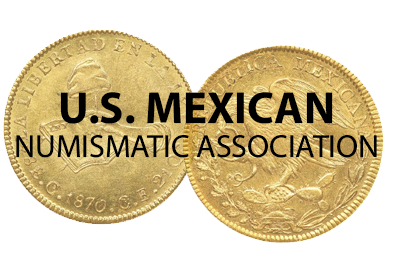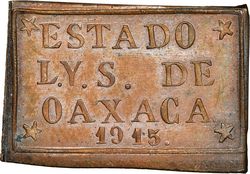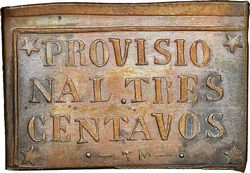Counterfeit “Provisio” Copper 3 Centavos (1915)
by Scott Doll
Introduction
This article will focus on the counterfeit for one of the more controversial, as well as interesting coins from this era, that coin being the State of Oaxaca rectangular three centavos with the “PROVISIO” legend. Commonly catalogued as Guthrie-Bothamley GB-290 or Woodworth-Flores (La Ventana) LV-3.
Many coins which I plan to review will be easy to spot the fake when compared to the genuine specimen while others will be quite difficult due to the better quality and craftsmanship of the fake. In this case, I will be presenting two different, yet similar fake coins which I feel are relatively well-made and may be difficult for the novice collector to identify as a counterfeit but on the other hand, they should be relatively easy for an experienced collector to identify. In my opinion, the counterfeit of this variety is well made and should be considered a somewhat dangerous fake.
Genuine Copper 3 Centavos (1915)
Plain Edge, 6.94 g, 16.23 mm (H) x 24.06 mm (W)
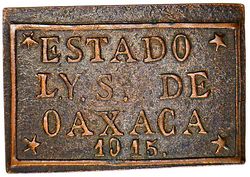
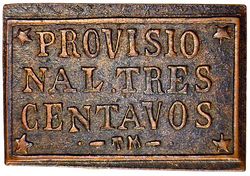
Counterfeit Example #1
Plain Edge, 2.52 g, 16.59 mm (H) x 24.29 mm (W)
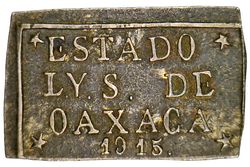
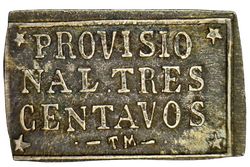
Counterfeit Example #2
Plain Edge, 3.23 g, 15.41 mm (H) x 24.52 mm (W)
Let me start by stating that I believe this counterfeit to be a modern fabrication and not something contemporary from the revolutionary period. Although it is possible it could be a contemporary strike, I strongly feel that it is of modern origin primarily because these have only been observed in the market in more recent times. Also, the original strikes were so unpopular at the time of the revolution, it was reported that most were melted, hence there was probably a single pair of dies. Lastly, all genuine examples I have seen over the years were all struck from the same pair of dies.
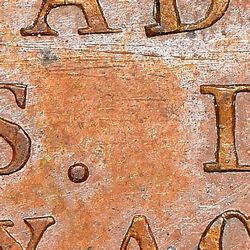
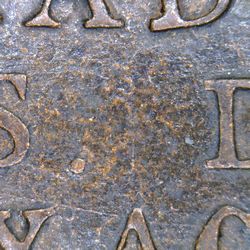
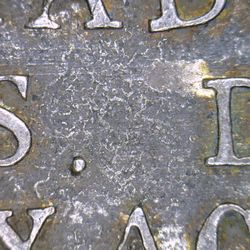
Genuine Counterfeit #1 Counterfeit #2
The first attribute I would like to highlight between the three coins is their size or dimension. All three are very close in height and width, however the weight is quite a bit different. Although weights and sizes do vary between coins, especially with coins from the Mexican Revolution, the genuine example mentioned here is approximately seven grams while both fakes are less than half that weight (2.52 g and 3.23 g respectively). Essentially, the planchets on the fakes are much thinner than the genuine coin. Another key point to highlight between the genuine and the fakes is the fact that the coin surface on the open fields of the genuine coin is moderately smooth and flat in appearance with the occasional die marks which look like long, thin lines while fakes have an uneven, rough appearance and do not show any signs of die marks like what is seen on the genuine coin. The surface on the fakes looks like what might best be described as leathery and uneven in appearance.
Obverse Attributes Differences
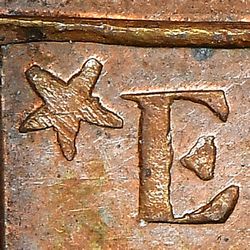
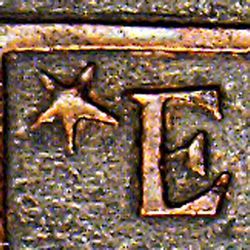
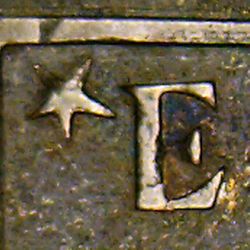
Genuine Counterfeit #1 Counterfeit #2
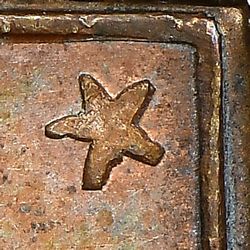
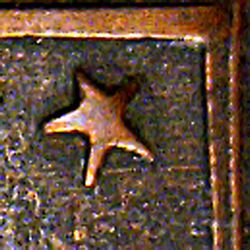
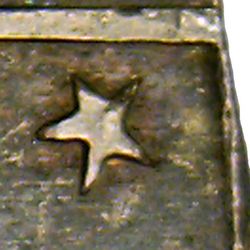
Genuine Counterfeit #1 Counterfeit #2
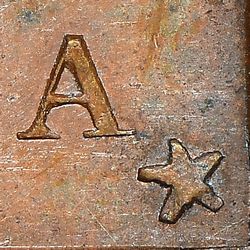
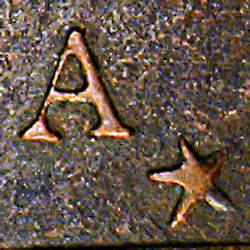
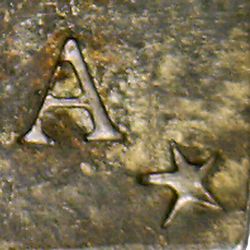
Genuine Counterfeit #1 Counterfeit #2
If you look closely at the three “star” pictures from the obverse, you will easily see that the genuine stars are much more uniform in shape and style, while the stars on both counterfeit examples are inconsistent in shape to include several points which are smaller or narrower than the other points.
Reverse Attributes Differences
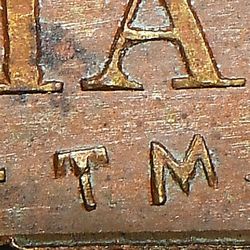
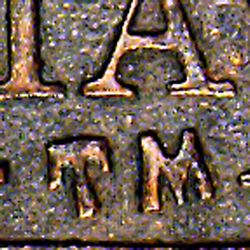
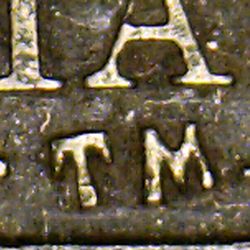
Genuine Counterfeit #1 Counterfeit #2
The easiest identifier on the reverse is the slightly angled letters “TM” located at the lower center area. The genuine letters have thin and simple lines while the right leg of the “M” is marginally shorter than the corresponding left side of the letter. In comparison, in both fakes, the letters are close together, as well as thick and bold, while the right leg of the “M” is long and relatively close to the same length as the corresponding left leg of the same letter.
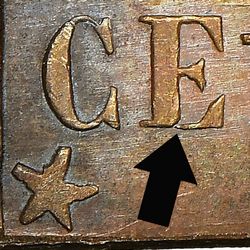
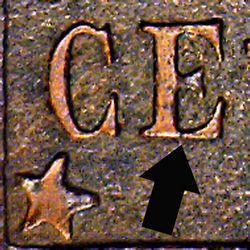
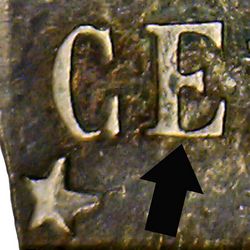
Genuine Counterfeit #1 Counterfeit #2
Just like the stars on the obverse, the stars on the reverse are one of the easiest ways to identify a genuine coin from a counterfeit. As previously stated, the stars on the genuine coin are very uniform in appearance while the fakes are more inconsistent in shape and size. Also, the letter “E” in “CENTAVOS” has a slight, narrow, open gap on the base leg where it meets up with the vertical bar of the letter, while both fakes are clearly connected but does show a very small notch, but not a full gap like the genuine strike.

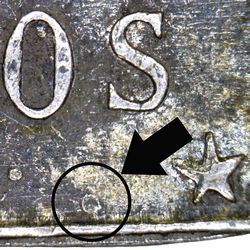
Counterfeit #1 Counterfeit #2
Finally, there is a large dot located between the right period or small dot after the letters “TM” positioned just to the left of the bottom right star just above the lined border which surrounds the coin. This appears to be some sort of die mark or punch mark which was most likely unintentional since this large dot is not something seen as an attribute on the genuine coin. This also leads to the conclusion that both fakes presented here most likely came from the same die pair. They were probably struck at different times since they both have slight variations with some of the attributes due to probably retooling and/or simply from wear from the striking of the coins. Based on the coin details, counterfeit #1 is probably an early strike since the details are much clearer and more concise while counterfeit #2 looks more like a late strike as the attributes are not as sharp and clear with some weakly struck areas when compared to counterfeit #1.
Summary
The modern counterfeit of a State of Oaxaca three centavos with the PROVISIO legend reviewed within this article is relatively well made and should be considered a somewhat dangerous counterfeit. Therefore, you should be wary when purchasing this variety unless you understand the key differences since a genuine strike will be quite a bit more expensive and valuable than a counterfeit. Also, I would like to state that there are several other attributes involving the legend lettering not presented here due to space constraints which could help distinguish between a real strike and a counterfeit, therefore do not use what has been reviewed as the complete list of differences but only a sampling of information and what I feel are the easiest and most straightforward to use to evaluate the genuineness of a coin.
Please send your comments, questions, or suggestions regarding this article, to me at
